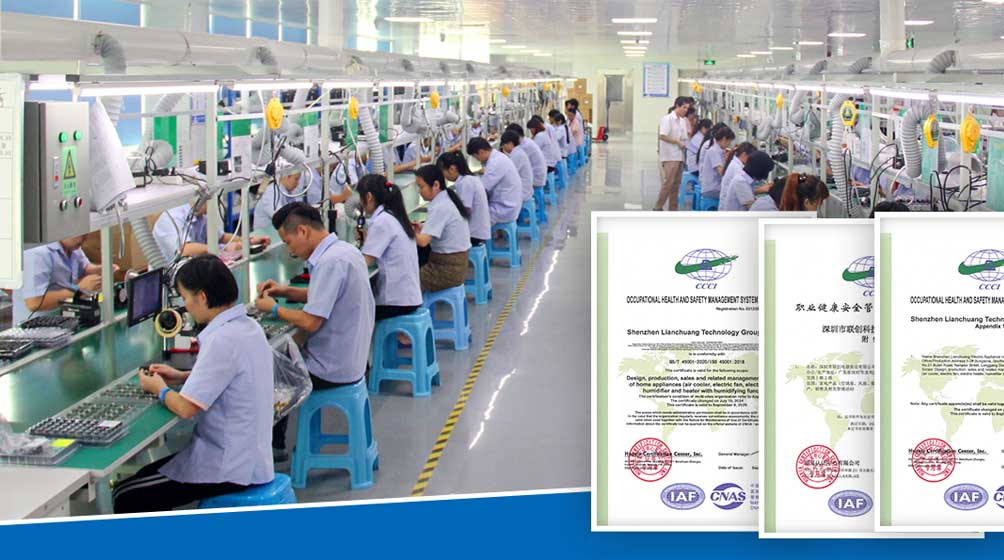What are the Types of Portable Room Heaters?

LlianChuang

1869 views

November 5, 2024
Portable room heaters are versatile devices that can provide warmth in specific areas of a home or office, improving comfort during colder months. Understanding the different types of portable heaters can help in choosing the right unit that suits your needs. This article examines the most common types of portable room heaters, along with their advantages and disadvantages.

1.Convection Heaters
Description:
Convection heaters warm the air in the room. They are designed to draw cooler air, heat it through a heating element, and then circulate the warm air throughout the space. Common types include electric baseboard heaters and wallmounted units.
Advantages:
Even Heating: Convection heaters provide consistent and even heat distribution throughout a room, making them comfortable for prolonged use.
Silent Operation: These heaters often operate quietly, making them suitable for bedrooms or other quiet spaces.
Energy Efficiency: Many models are energyefficient, which can help lower energy bills if used judiciously.
Disadvantages:
Slow to Heat: It may take a while for the heater to raise the temperature since it relies on warming the air.
Requires Space: Some convection heaters are bulkier and may take up floor space or require installation.
2.Radiant Heaters
Description:
Radiant heaters work by emitting infrared radiation, which directly warms objects and people in their path rather than heating the air. Common types include patio heaters and infrared models.
Advantages:
Instant Heat: Radiant heaters provide immediate warmth, making them ideal for quick heating in specific areas.
Focused Heating: They can heat specific zones or even outdoor living spaces effectively.
Energy Efficiency: These heaters can be very efficient for their intended use, as energy is not wasted on heating nonoccupied areas.
Disadvantages:
Limited Range: The heating effect diminishes significantly with distance; they are effective only in their direct line of sight.
Safety Concerns: Radiant heaters can get very hot, posing a burn risk and requiring caution if there are small children or pets in the vicinity.
3.Fanforced Heaters
Description:
Fanforced heaters combine a heating element with a fan that circulates warm air throughout the room. These units are often compact and portable.
Advantages:
Quick Heating: The fan helps distribute heat quickly throughout the space, making them effective for rapid warmth.
Portable: Many fanforced heaters are lightweight and easy to move from room to room.
Variety of Styles: There are numerous designs available, offering different features like thermostats or timers.
Disadvantages:
Noise: The operation of the fan can create noise, which may be disruptive in quiet environments like bedrooms or offices.
Dust Propagation: The fan can stir up dust and allergens, which may be problematic for individuals with respiratory issues.
4.Oilfilled Radiators
Description:
Oilfilled radiators are filled with oil that is heated by electric coils. The oil retains heat and radiates it into the surrounding air, providing longlasting warmth even after the heater is turned off.
Advantages:
Effective Heat Retention: Once heated, these heaters can continue to radiate heat long after they are turned off, providing consistent warmth.
Silent Operation: They operate quietly, making them suitable for bedrooms or study rooms.
Energy Efficient: Since they provide prolonged warmth, they can be energy efficient in the long run.
Disadvantages:
Slow to Heat: It takes time for the oil to warm up, meaning immediate heat is not available.
Heavy and Bulky: Oilfilled radiators are typically heavier, which can make them less convenient to transport.
5.Ceramic Heaters
Description:
Ceramic heaters utilize ceramic plates to generate heat. The heat is then blown into the room using a fan, making these heaters effective at warming spaces quickly.
Advantages:
Fast Heating: They can heat a room relatively quickly, thanks to the combination of ceramic plates and forced airflow.
Compact Size: Many ceramic heaters are small and can easily be stored or moved, making them userfriendly.
Versatile: They often come with adjustable thermostats and safety features, such as tipover protection.
Disadvantages:
Noise Level: The fan can create a noise, which might be distracting for some users.
Limited Coverage: Like fanforced heaters, they may only heat a small area effectively.
6.Propane Space Heaters
Description:
Propane space heaters are fueled by propane gas and can be used indoors or outdoors, depending on the model. They are often utilized for heating garages or during outdoor activi.
Advantages
Propane heaters have high heating efficiency, stable and reliable operation, and lower use costs than other heating methods such as electric heating. In addition, propane heaters also have the advantages of being clean, environmentally friendly, and easy to maintain.
Disadvantages
The power of the space heater is 500~1500 watts. The slightly more complex radiant space heater has a small piece of heat radiation board coated with infrared radiation material at the front, and there are many small holes on it to increase the heat exchange area and infrared radiation area. Its disadvantage is that it is likely to cause carbon monoxide poisoning, and excessive heating space, the internal space gradually becomes dry, making the human skin easy to dry, and the lack of water in the human body can easily cause dizziness.
In summary, different types of room portable heaters have their own advantages and disadvantages. When choosing a portable heater, consumers should consider various factors according to their actual needs and usage scenarios, and choose a heater that suits them. At the same time, when using a portable heater, you should also pay attention to safety to avoid accidents such as fire and scalding.
Share:









